By Dan Weisz
Over the past weeks I have taken some photos that didn’t fit into any of the “themed” emails I have sent. Here is my first collection of this and that.
We have had fires on the mountains in Tucson for the past week. One sunset last week was beautiful, yet the clouds in the sky turned to thunderstorms at night which created the lightning caused fires. This snapshot was the beauty and the calm before the storm.
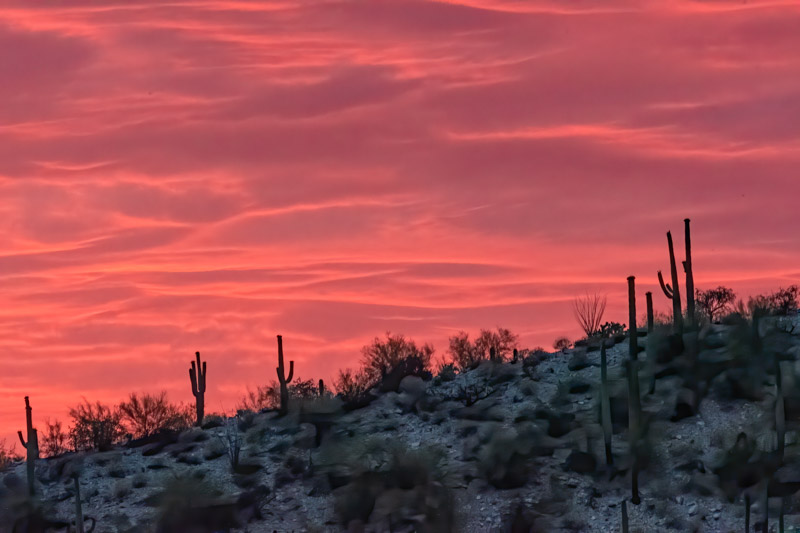
And a moment later from another angle……
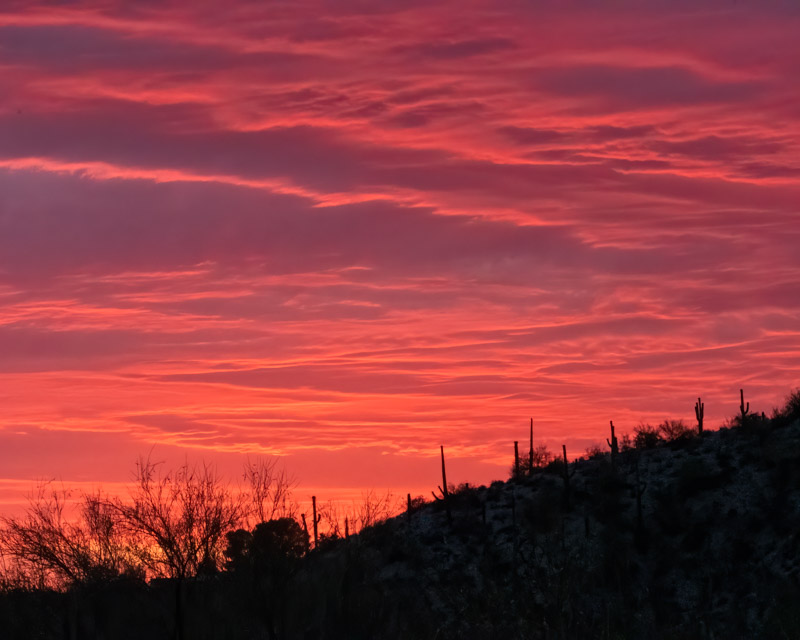
The newspapers and social media have been full of dramatic photos of the fires on the mountain. I only have two that I wish to share. Two days ago the fire was coming down the hillside on our side of the Catalinas. This is what most of the western half of the range looked like.
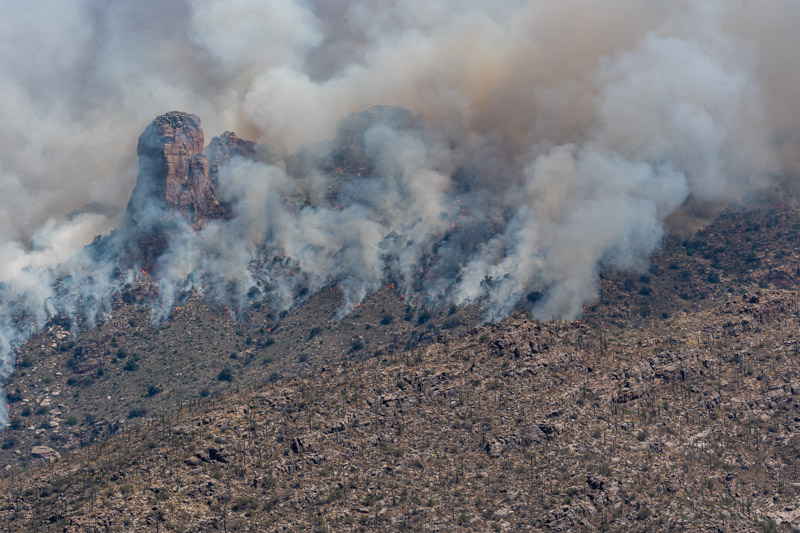
Thanks to a lot of work by a number of crews, water and fire retardant made a big difference, and then the winds shifted, blowing from the southwest which pushed the fires back up the hillsides into areas that had previously burned. With no new fuel, much of the fires on our side of the mountain are now out. The fires are still burning on the north side of the Catalinas, so this story is not over yet.
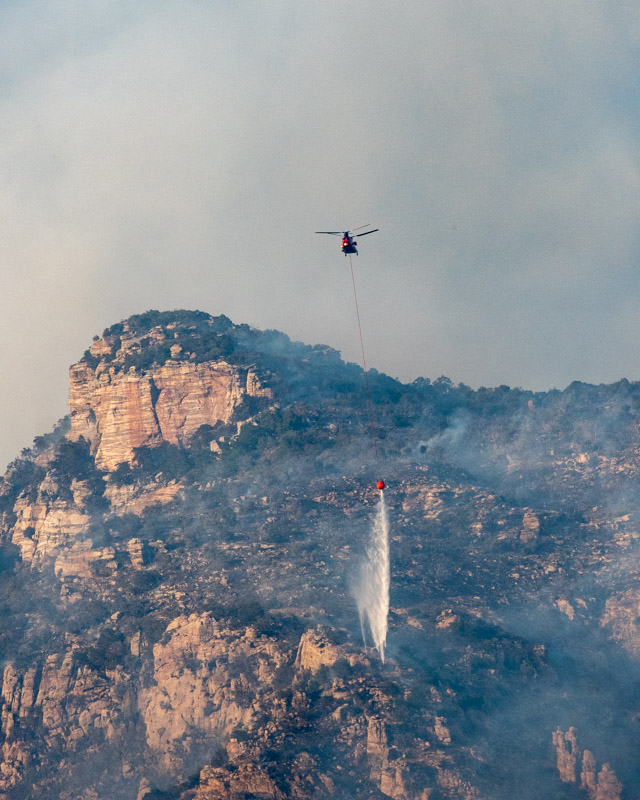
There is no fire yet on the eastern half of the Catalinas. Two weeks ago near Rose Canyon Lake we saw a few Red-faced Warblers. It is easy to see how this very active warbler got its name. This is yet another bird whose core range is in Mexico but which travels to coniferous forests in Arizona and New Mexico to breed in the summers. The male shows off his white rump patch as much as possible during a mating display. These birds forage among branches and needles high in the trees but make their nest in a depression on the ground.
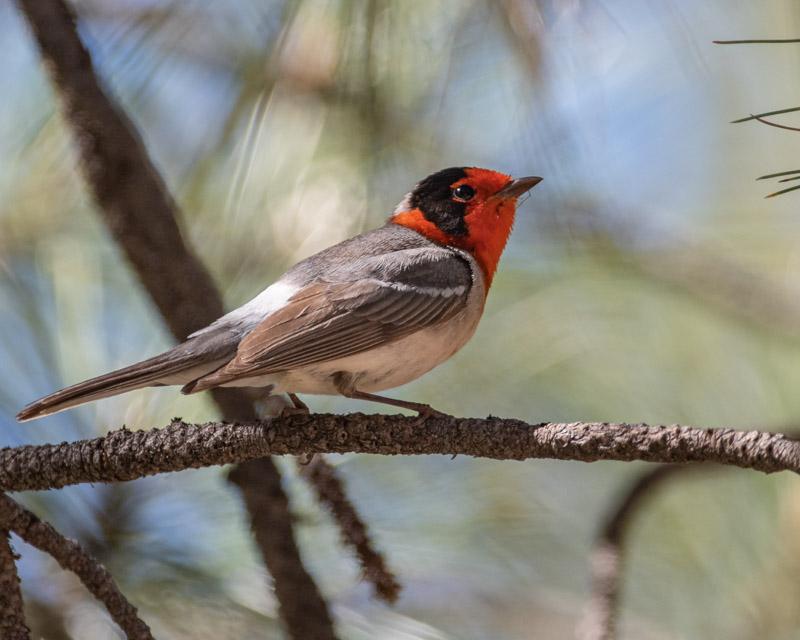
The Red-faced Warbler sings to attract a mate and to establish territory. The song and calls of Red-faced Warblers can be found here: https://www.allaboutbirds.org/guide/Red-faced_Warbler/sounds
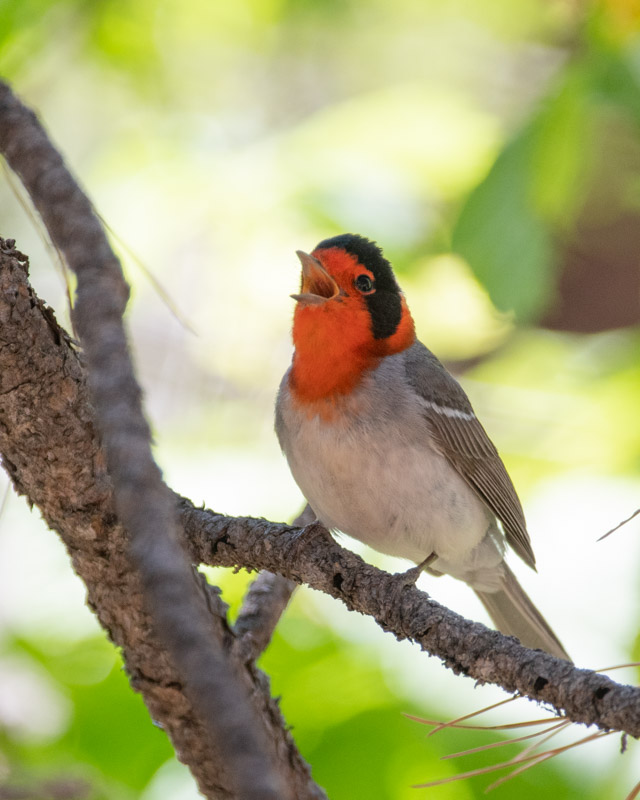
A much more plain bird is the House Wren. House Wrens can be seen throughout the United States. In southern Arizona they can be found in higher elevations in summer, and lower elevations in winter. You can pick your choice of House Wren songs here: https://www.allaboutbirds.org/guide/House_Wren/sounds
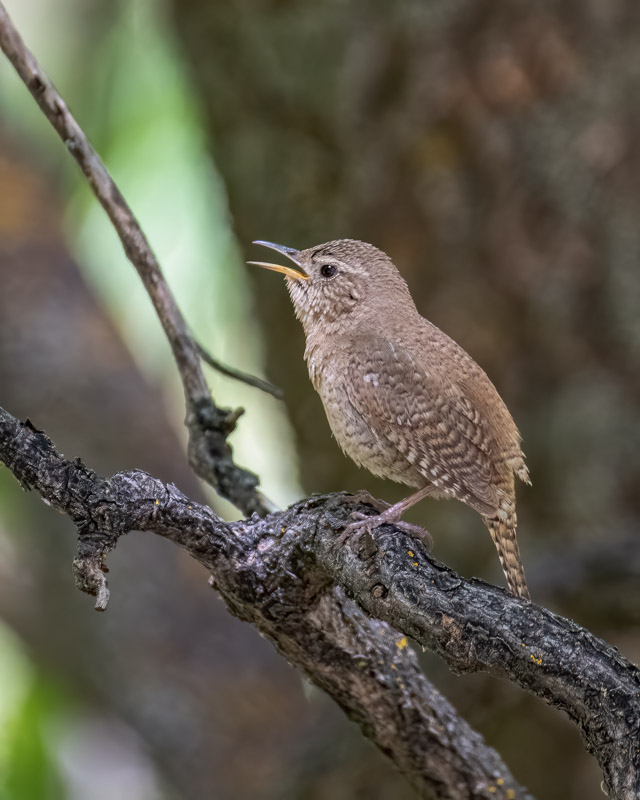
We spotted some Western Bluebirds too. It is always a treat to see these blue birds. Their songs are very pretty: https://www.allaboutbirds.org/guide/Western_Bluebird/sounds
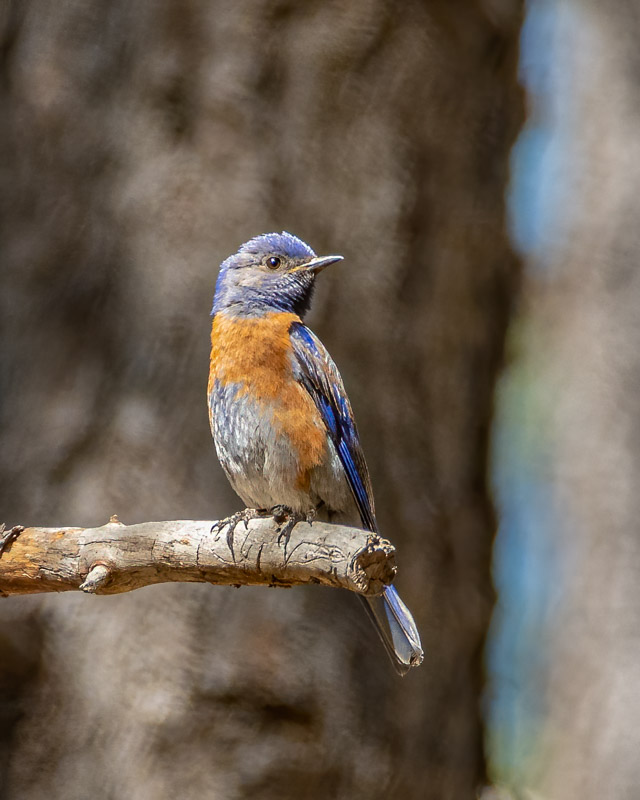
I see many more Acorn Woodpeckers in Madera Canyon and in the Huachucas, but the Catalinas has its share of Acorn Woodpeckers too. Their clown-like face certainly stands out. While they are very social birds, this one was exploring by itself. Acorn Woodpeckers are known for creating huge granaries, storing thousands of acrons each year by jamming them into specially made holes in trees. As with many of the mountain birds who may be heard before they are seen, their songs are very distinctive: https://www.allaboutbirds.org/guide/Acorn_Woodpecker/sounds
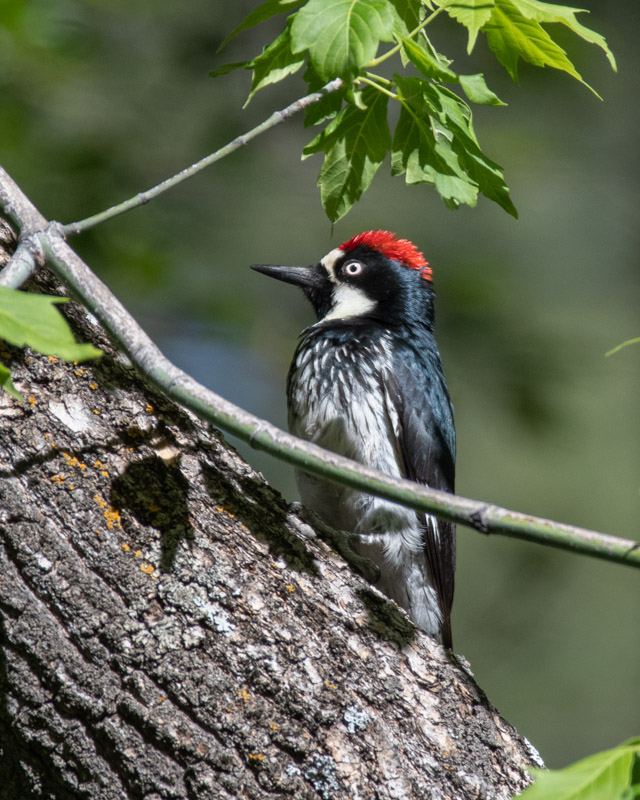
In Tucson and the desert, we have Antelope Ground Squirrels which people mistakenly call chipmunks due to their stripes. On Mt. Lemmon, we actually have chipmunks. The Cliff Chipmunk is a squirrel which, as its name implies, lives among cliffs and rocky, boulder fields among pinyon and juniper habitat. This chipmunk is striped from its face all the way to its bushy tail.
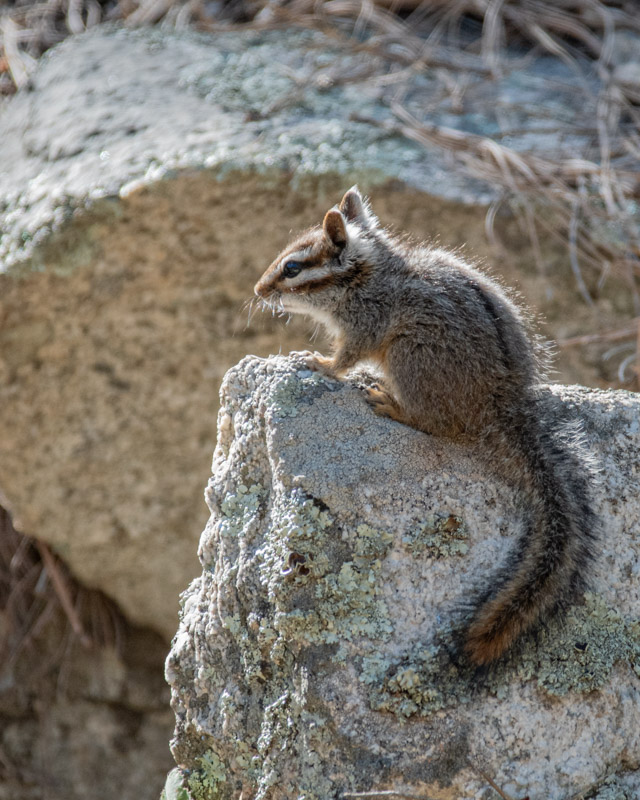
Once off the mountain, I spent time walking in my neighborhood. Atop the saguaro that houses the Brown-crested Flycatcher nest, a Brown-Headed Cowbird stopped by. Brown-Headed Cowbirds can be found throughout the United States at some point during the year and are America’s most common “brood parasite.” A female cowbird makes no nest of her own but instead lays her eggs in the nests of other bird species, who then raise the young cowbirds. In any case, the stocky bird with a large conical beak looked special on top of the saguaro blossoms.
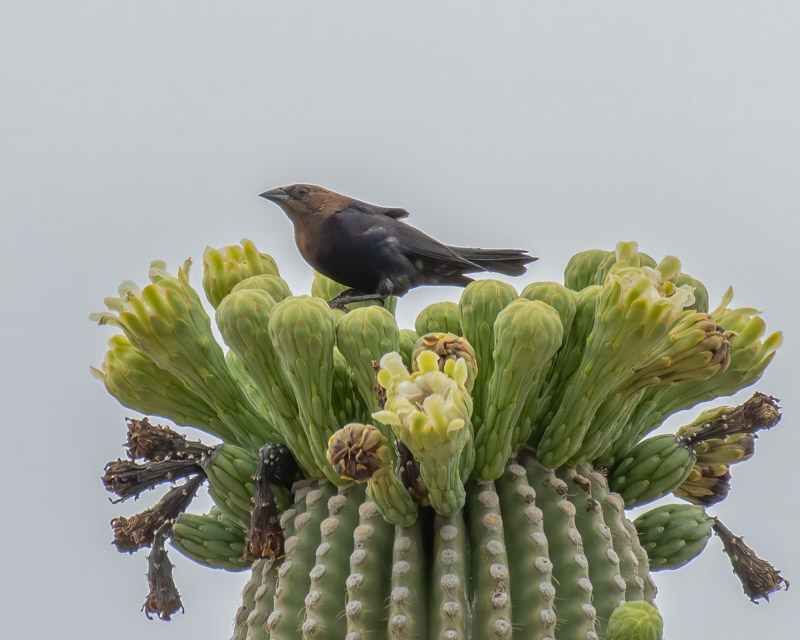
Finally, many of you may remember that I have had Western Screech Owls nesting in a nest box in my yard annually. This year I found the female dead and thought I would not have another family. The male Owl continued to live on my neighbor’s porch and I would hear him call nightly. Last week, I noticed that his hard work had paid off and there was a female Western Screech Owl in the nest box again!
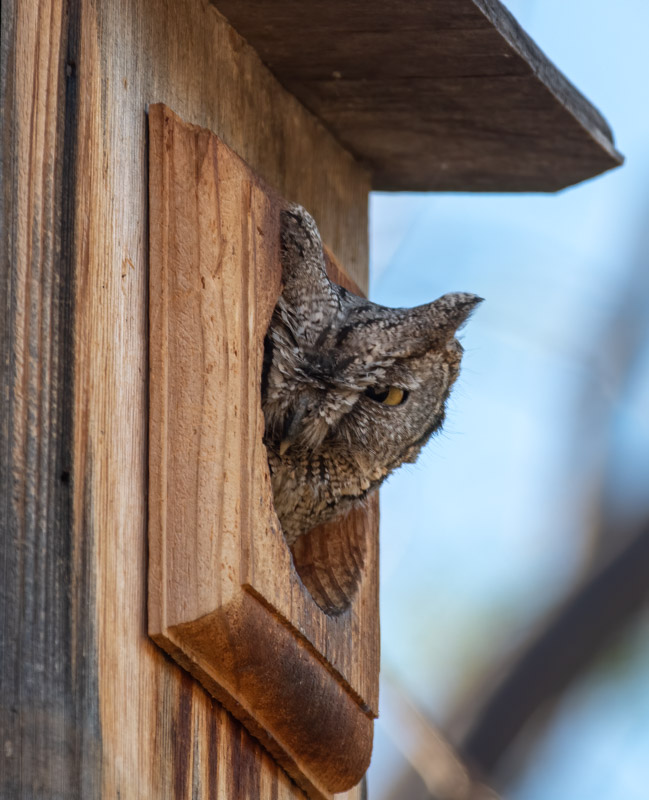
I was excited to see her and looked forward to follow another family. I thought this would be a long process but the next night saw that there were baby owls ready to fledge. I’ll share photos once the birds all leave the nest so you’ll have to wait.
